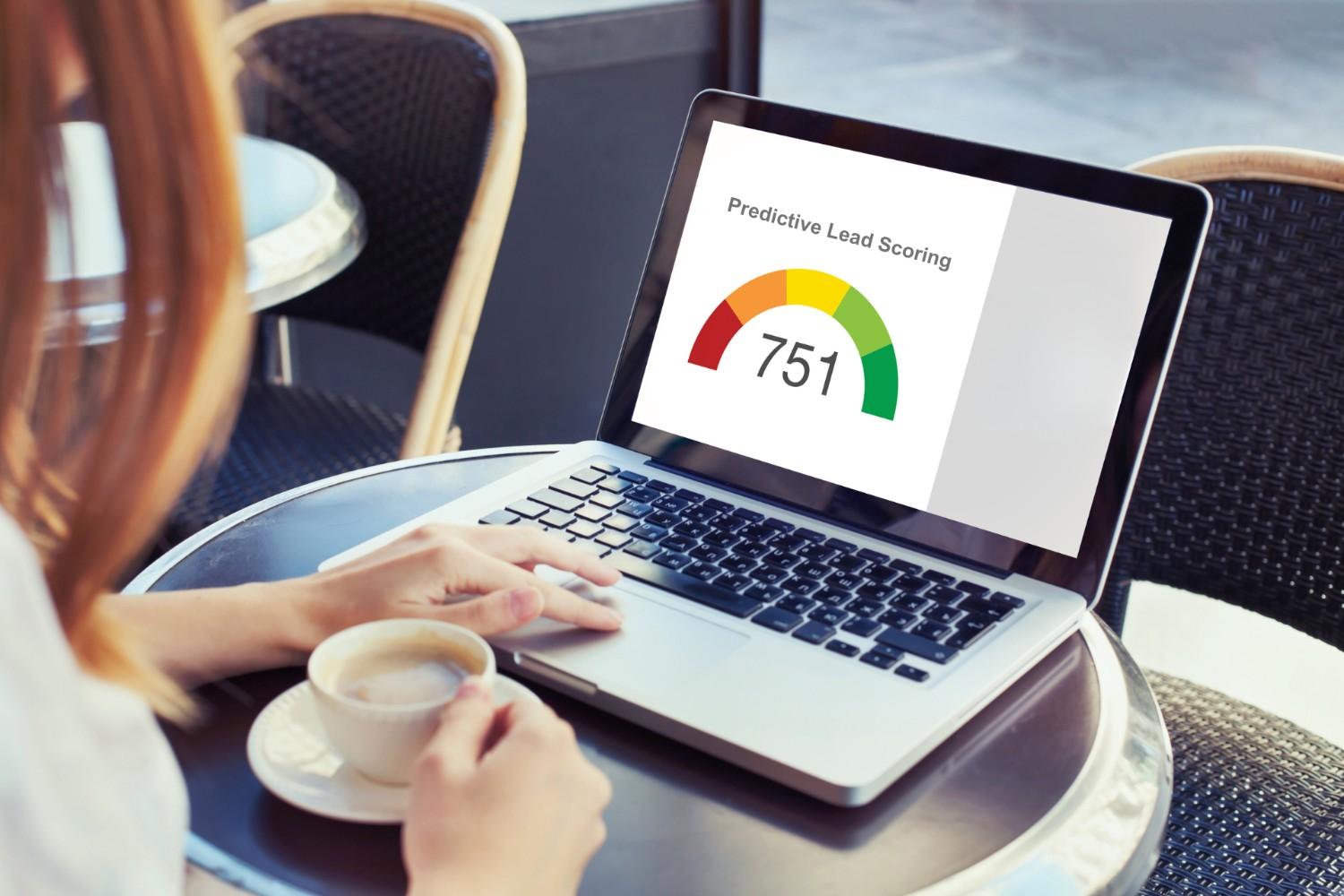Predictive Lead Scoring: Prioritizing Sales Efforts with Data

Identifying the best leads among thousands can transform your sales strategy. Companies that implement predictive lead scoring experience a 20% increase in conversion rates. This blog explores how predictive lead scoring can revolutionize your sales efforts and drive efficiency by leveraging advanced data analytics and machine learning.
What is Predictive Lead Scoring
Predictive lead scoring leverages machine learning algorithms to process large datasets and forecast which leads are most likely to convert. Unlike traditional lead scoring, which relies on static criteria and manual evaluation, predictive lead scoring dynamically adjusts based on real-time data, offering a more accurate and efficient way to prioritize sales efforts.
How Predictive Lead Scoring Works
Predictive lead scoring models evaluate implicit and explicit data to generate lead scores. Implicit data includes behaviors like website visits, email engagements, and social media interactions, while explicit data encompasses demographic information such as job titles and industry. By analyzing these data points, predictive models identify patterns and correlations that indicate a lead’s likelihood to convert.
For instance, attending webinars, downloading specific types of content, and engaging with certain online topics are behaviors that predictive models might correlate with higher conversion rates. This nuanced understanding allows businesses to focus their efforts on the most promising leads early in the buying cycle, often even before direct contact with the sales team.
Benefits of Predictive Lead Scoring
Predictive lead scoring offers several significant advantages over traditional methods, enhancing both efficiency and effectiveness in sales and marketing processes.
Increased Efficiency and Accuracy
Predictive lead scoring automates the lead evaluation process, significantly reducing the time and effort required to identify high-potential leads. Leveraging data and machine learning algorithms enables sales teams to focus on the leads most likely to convert, thereby enhancing productivity and reducing wasted efforts.
Reduction of Human Error and Bias
Traditional lead-scoring methods are susceptible to human error and bias because they depend largely on subjective assessments. Predictive lead scoring minimizes these risks through objective data analysis, leading to a more consistent and reliable qualification process.
Enhanced Alignment Between Marketing and Sales
Predictive lead scoring offers a unified framework for marketing and sales teams, promoting a common understanding of high-quality leads. This synergy enhances collaboration and streamlines the transition from marketing to sales, resulting in more effective follow-up and improved conversion rates.
Better Customer Insights and Targeting
By analyzing vast amounts of data, predictive lead scoring provides deeper insights into customer behaviors and preferences. This information enables marketing teams to create more targeted and personalized campaigns, improving engagement and conversion rates.
Implementing Predictive Lead Scoring
Implementing predictive lead scoring involves several key steps:
1. Choose the Right Software
Select a predictive lead-scoring platform that integrates well with your existing CRM and marketing automation tools. Options like Salesforce Einstein, HubSpot Sales Hub, and Marketo are known for their robust features and scalability.
2. Collect and Integrate Data
Ensure you have a system to collect data from various touchpoints, such as website visits, email engagements, and social media interactions. Integrating this data into your CRM is crucial for the predictive model to analyze.
3. Create Your Ideal Customer Profile (ICP)
Using historical data, create an Ideal Customer Profile (ICP) that serves as a benchmark for scoring leads. This profile is based on the characteristics and behaviors of past high-quality leads.
4. Set Up Your Scoring Model
Configure the predictive scoring model in your chosen software, setting parameters and weights for different behaviors and demographic factors. This step involves identifying the data points that most accurately indicate a lead’s potential to convert.
5. Test and Refine
Before fully rolling out the predictive scoring model, test it with a subset of leads to ensure accuracy. Use the insights gained to refine the model, adjusting parameters as necessary to improve performance.
6. Monitor and Adapt
Predictive lead scoring models are dynamic and should be regularly monitored to ensure they remain effective. Continuously adapt the model to account for changes in customer behavior or market conditions.
7. Train Your Team
Make sure your sales and marketing teams are proficient in using the predictive lead scoring system. Provide training on interpreting scores and taking appropriate actions based on them, ensuring that the system is utilized to its full potential.
Real-World Applications and Success Stories
Predictive lead scoring is transforming businesses across various industries. For instance, HubSpot’s predictive lead scoring module leverages machine learning to automate lead qualification, significantly improving the accuracy of lead prioritization and enhancing sales productivity. Similarly, Salesforce Einstein integrates predictive scoring with CRM and marketing tools, providing sales teams with actionable insights and helping them focus on leads with the highest conversion potential.
Case Study: Growth Way
Growth Way, a digital marketing agency, implemented predictive lead scoring to streamline its lead management process. By analyzing customer behaviors and creating an ICP, they identified high-potential leads earlier in the sales cycle. This approach led to a 30% increase in lead conversion rates and substantially shortened the sales cycle.
Case Study: SwagMagic
SwagMagic, a corporate gifting organization, utilized predictive lead scoring to improve lead prioritization. By integrating predictive scoring with their CRM, they could automatically segment and target leads based on their probability of conversion. This led to a 20% increase in revenue and more efficient use of sales resources.
Overcoming Challenges in Predictive Lead Scoring
Despite its benefits, implementing predictive lead scoring can present challenges, particularly related to data quality and integration.
Data Quality and Integration Issues
The effectiveness of predictive lead scoring is largely determined by the quality of the data input into the system. Poor data quality, such as outdated information or duplicate records, can skew the model’s output. To address this, companies should establish rigorous data governance policies, conduct regular audits, and employ data cleaning tools to maintain data integrity.
Integration Complexities
Integrating predictive lead scoring systems with existing CRM and ERP solutions can be complex, especially if dealing with legacy systems. Investing in middleware or APIs to enable seamless data exchange can address these challenges. Additionally, selecting a predictive lead-scoring solution compatible with the existing technology stack is crucial.
Addressing Data Silos and Accessibility
Data silos within an organization can hamper the effectiveness of predictive lead scoring. Promoting transparency and data sharing across departments and implementing integrated systems that consolidate data into a single repository can help overcome this hurdle.
Training and Change Management
Transitioning to a predictive lead scoring system may meet resistance from sales teams accustomed to traditional methods. Providing adequate training and change management support is essential to ensure staff understand the benefits and can effectively utilize the new system.
Maximizing Sales Success with Predictive Lead Scoring
Predictive lead scoring represents a significant advancement in lead management, offering a more accurate, efficient, and data-driven approach to prioritizing sales efforts. By leveraging machine learning and advanced analytics, businesses can identify high-potential leads earlier in the sales cycle, improve alignment between marketing and sales teams, and ultimately increase conversion rates and revenue. As the digital landscape continues to evolve, adopting predictive lead scoring will be crucial for organizations seeking to stay competitive and maximize their sales potential.
Incorporating predictive lead scoring into your sales and marketing strategy can transform your approach to lead management, helping you focus your efforts where they matter most and achieve your sales goals more effectively.
This comprehensive approach ensures that your predictive lead scoring model is effective, dynamic, and integrated seamlessly with your existing processes, ultimately leading to better lead management and higher conversion rates.
Stay informed with the newest insights, effective practices, and detailed case studies on digital transformation. Gain a competitive edge by exploring our in-depth guides on the latest technologies.




